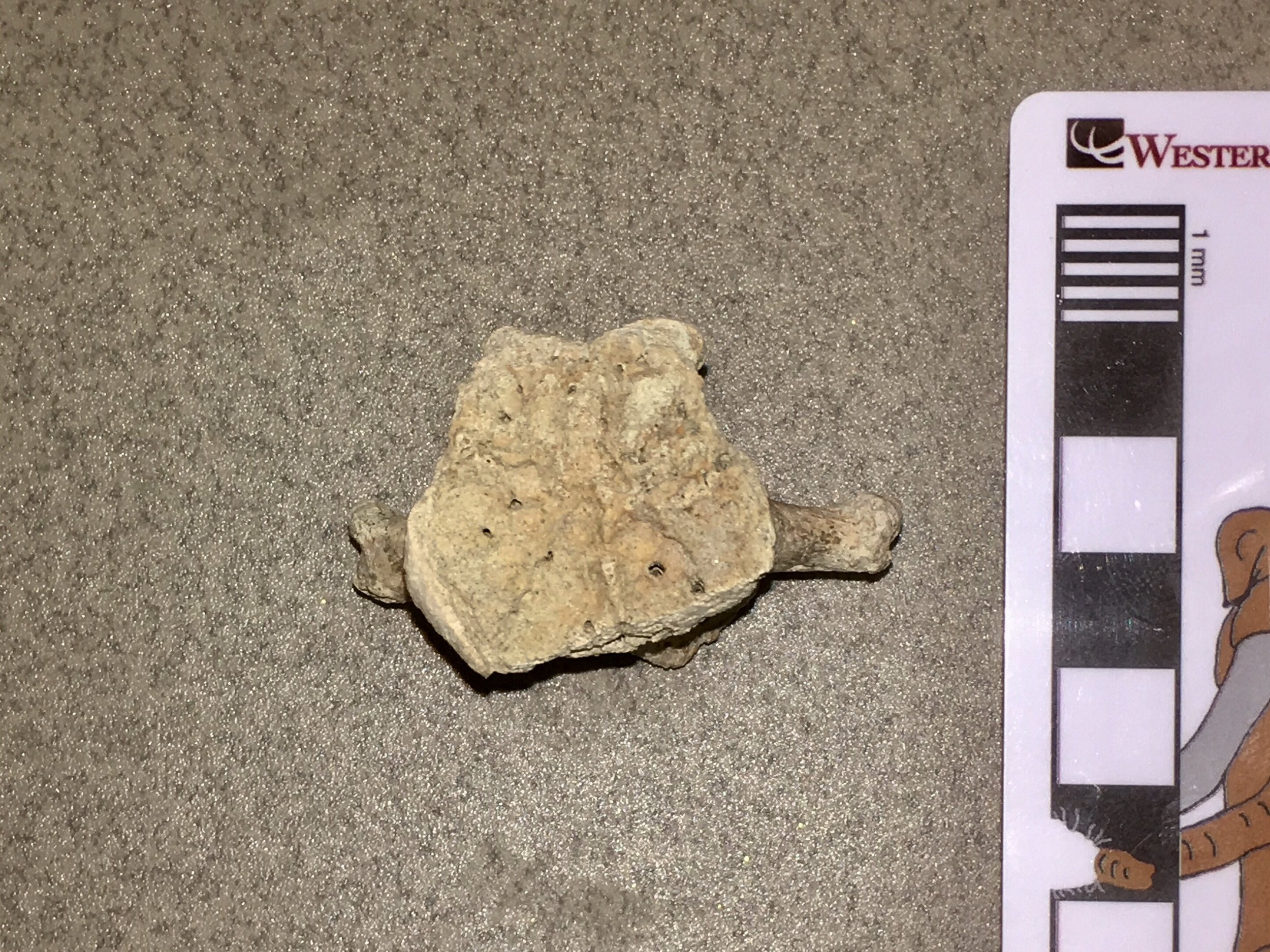 As promised, as we prepare for the Valley of the Mastodons workshop and exhibit, I'm going to be talking even more than usual about mastodons. We have hundreds of mastodon bones in the WSC collections, and we have to examine them all over the next month to decide what's going on exhibit (which will be most of them).The small bone shown above is a caudal (tail) vertebra, shown in dorsal view with anterior at the top. The ventral view is below:
As promised, as we prepare for the Valley of the Mastodons workshop and exhibit, I'm going to be talking even more than usual about mastodons. We have hundreds of mastodon bones in the WSC collections, and we have to examine them all over the next month to decide what's going on exhibit (which will be most of them).The small bone shown above is a caudal (tail) vertebra, shown in dorsal view with anterior at the top. The ventral view is below: Looking at elephant tails for comparison (there isn't a lot of literature on mastodon tails!) this vertebra appears to come from roughly the middle of the tail. Proboscidean tails are relatively limited in use (modern elephants will use them to brush off insects, babies will sometimes hold onto their mother's tail, etc.), so the more distal vertebrae are quite simple. This vertebra has a neural canal (the passage for the spinal cord) that is open dorsally and very small transverse processes, both typical for proboscidean caudal vertebrae.In anterior view (below) we can see that the vertebra is also missing the epiphysis that forms the end of the bone:
Looking at elephant tails for comparison (there isn't a lot of literature on mastodon tails!) this vertebra appears to come from roughly the middle of the tail. Proboscidean tails are relatively limited in use (modern elephants will use them to brush off insects, babies will sometimes hold onto their mother's tail, etc.), so the more distal vertebrae are quite simple. This vertebra has a neural canal (the passage for the spinal cord) that is open dorsally and very small transverse processes, both typical for proboscidean caudal vertebrae.In anterior view (below) we can see that the vertebra is also missing the epiphysis that forms the end of the bone: An unfused epiphysis is typically indicative of a bone that was still growing, suggesting that this was a relatively young animal. In fact, this vertebra is part of the associated skeleton of "Little Stevie", the most complete mastodon from Diamond Valley Lake. Based on his teeth and bone development, "Stevie" was a late adolescent, probably somewhere in the range of 18-22 years old.This vertebra, along with hundreds of other mastodon bones, will be on exhibit starting this August with the opening of Valley of the Mastodons.
An unfused epiphysis is typically indicative of a bone that was still growing, suggesting that this was a relatively young animal. In fact, this vertebra is part of the associated skeleton of "Little Stevie", the most complete mastodon from Diamond Valley Lake. Based on his teeth and bone development, "Stevie" was a late adolescent, probably somewhere in the range of 18-22 years old.This vertebra, along with hundreds of other mastodon bones, will be on exhibit starting this August with the opening of Valley of the Mastodons.
